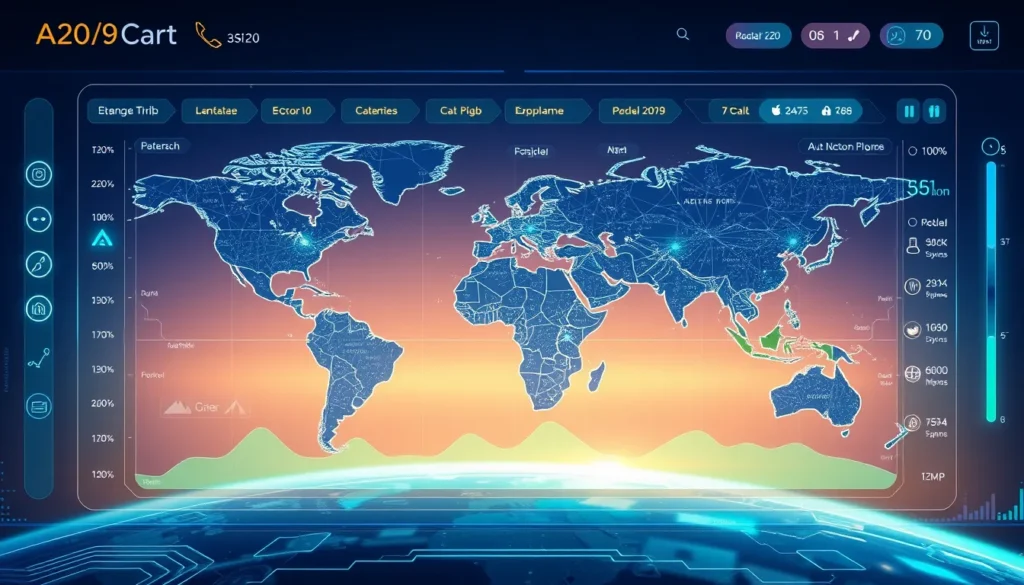Now Reading: Vodafone AI & 5G Network Automation: Telecom Revolution
-
01
Vodafone AI & 5G Network Automation: Telecom Revolution
Vodafone AI & 5G Network Automation: Telecom Revolution

Vodafone AI & 5G Network Automation: Telecom Revolution
Vodafone is at the forefront of a digital transformation in telecommunications with its pioneering approach to Vodafone AI network automation. By integrating advanced machine learning algorithms and predictive analytics, Vodafone is revolutionizing telecom operations and setting a new standard for the industry. This strategic initiative not only enhances network reliability but also paves the way for improved service delivery in our increasingly connected world.
Vodafone AI: Transforming Telecom Networks
In today’s fast-paced digital era, the need for intelligent network management has never been greater. Vodafone’s use of Vodafone AI network automation is a game-changer for the telecommunications industry. The implementation of cutting-edge machine learning algorithms and predictive analytics creates a self-sustaining system that monitors network performance, predicts potential issues, and quickly resolves anomalies. This approach leads to:
- Reduced downtime and improved service quality
- Enhanced customer experience through proactive issue resolution
- Lower operational costs via automated processes
By harnessing the power of artificial intelligence, Vodafone is also addressing the challenge of managing the complex data traffic generated by 5G networks. The move to AI-powered network control represents not just a technical upgrade but an operational revolution in how telecom networks are managed.
How Vodafone Uses AI for Network Management
A dedicated aspect of this transformation is the detailed strategy on how Vodafone uses AI for network management. This section dives into the innovative processes that allow for real-time monitoring and dynamic allocation of resources. Here are some key points:
Predictive Maintenance and Real-Time Analytics
The incorporation of predictive analytics enables Vodafone to foresee network disruptions before they occur. By analyzing vast amounts of data, the system can predict when maintenance is needed, preventing network failures. This proactive maintenance strategy is integral to Vodafone AI network automation and ensures that the network remains robust and efficient.
Intelligent Decision Making and Resource Allocation
Another critical component is intelligent decision making. Vodafone leverages its AI tools to balance load and manage network traffic. This allows for dynamic resource allocation where the system adjusts automatically to ensure optimal performance. The application of Vodafone AI network automation not only boosts overall efficiency but also minimizes manual intervention and error.
Impact of AI on 5G Network Performance
The introduction of AI into the telecom sector has had a profound impact on 5G network performance. As Vodafone continues to advance its capabilities with Vodafone AI network automation, the following benefits have become evident:
- Faster, more reliable connectivity for consumers
- Greater scalability to meet increasing data demands
- Enhanced security measures due to continuous monitoring
These improvements are crucial as the number of connected devices grows and data demands expand exponentially. By modernizing network operations, Vodafone is setting a benchmark for how artificial intelligence can be integrated into critical infrastructure.
The Future of Telecom with AI-Driven Automation
Vodafone’s commitment to AI in telecom operations signals a future where networks are self-optimizing and reactive to real-time signals. The continuous evolution of Vodafone AI network automation means that telecommunications will become more efficient and inherently capable of addressing future challenges. As the industry moves towards more intelligent, automated systems, the strategic benefits include:
- Proactive problem solving through advanced analytics
- Increased efficiency in managing network traffic
- Sustainable growth driven by innovative technology
For additional context on the integration of AI in telecommunications, visit the official Vodafone website at Vodafone or check out resources on advanced 5G technologies through reputable sites like Wikipedia’s 5G page at 5G.
Conclusion
In conclusion, Vodafone’s forward-thinking approach through Vodafone AI network automation is transforming telecom operations. The strategic blend of artificial intelligence and 5G network management not only enhances current performance but also sets a strong foundation for future innovations. This initiative demonstrates how embracing advanced technology can lead to more adaptive, efficient, and intelligent network operations. As the telecom landscape continues to evolve, Vodafone stands out as a leader guiding the industry towards a smarter, more connected future.
By continuously refining Vodafone AI network automation techniques, the company is making significant strides towards a future where network issues are preemptively managed, and customer experiences are greatly enhanced. This digital transformation is not just about technology—it’s about redefining how networks operate, paving the way for a more dynamic and resilient telecommunications era.

























